Vietnam captivates travelers with its stunning landscapes, rich cultural heritage, and warm hospitality. From mist-shrouded mountains in the north to pristine beaches in the south, the country offers an incredible diversity of experiences for every type of traveler. At Phieu Travel, we’ve spent years exploring the most beautiful places in Vietnam, discovering hidden gems alongside iconic landmarks. This guide shares our carefully curated selection of must-visit destinations that showcase the country’s breathtaking natural wonders, vibrant cities, and timeless cultural treasures.
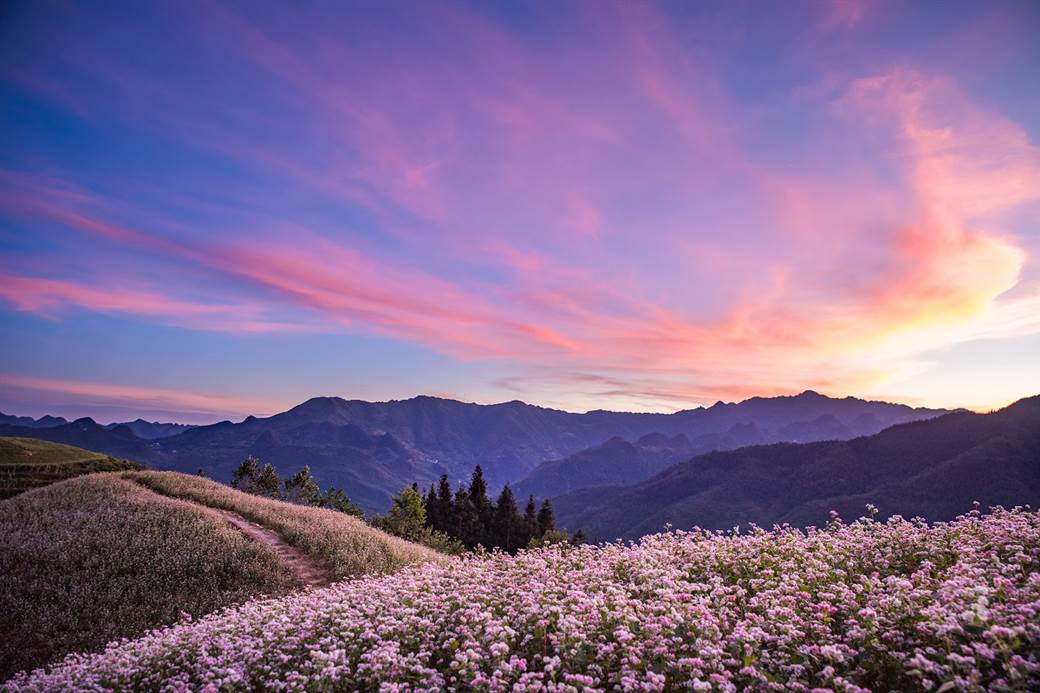
1. Northern Vietnam’s Natural Wonders
Northern Vietnam presents a dramatic landscape of limestone karsts, terraced rice fields, and mist-covered mountains. This region offers some of Vietnam’s most spectacular natural scenery, from the emerald waters of Ha Long Bay to the cloud-touched highlands of Sapa. The north’s distinctive seasonal changes mean each visit can present an entirely different face of these remarkable destinations.
1.1 Ha Long Bay – Scenic Cruises & Caves
Ha Long Bay stands as Vietnam’s most recognizable natural wonder and a UNESCO World Heritage site. This breathtaking seascape features nearly 2,000 limestone islands rising dramatically from turquoise waters. The bay’s name translates to “descending dragon,” reflecting the ancient legend that these islands were created by a dragon’s thrashing tail as it charged toward the sea.
Cruising through Ha Long Bay reveals hidden caves, floating fishing villages, and secluded beaches. Many travelers choose overnight cruises to experience both sunrise and sunset over this majestic landscape. The changing light throughout the day transforms the bay’s appearance, creating an ever-shifting panorama of shadows and reflections on the water.
Sung Sot Cave (Surprise Cave) ranks among the bay’s most impressive natural formations. Its vast chambers reveal stunning stalactites and stalagmites illuminated by strategic lighting. Kayaking offers another perspective, allowing visitors to paddle through hidden lagoons and approach towering karsts up close. The peaceful waters and secretive coves create perfect conditions for exploring at your own pace.
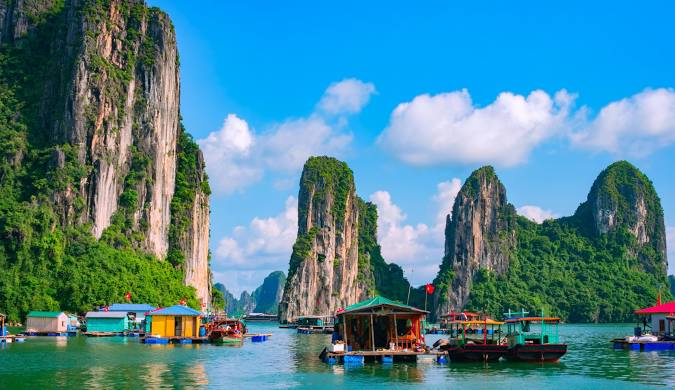
1.2 Sapa – Rice Terraces & Ethnic Villages
Nestled in Vietnam’s northwestern mountains, Sapa has captivated travelers for generations with its terraced rice fields and vibrant hill tribe cultures. The stepped rice paddies, carved into mountainsides over centuries, create living landscapes that change colors with the seasons. In spring, the terraces fill with water, creating mirrored surfaces that reflect the sky. By late summer, they transform into waves of golden rice ready for harvest.
Home to several ethnic minority groups including the Hmong, Dao, Tay, and Giay people, Sapa offers authentic cultural experiences. Traditional villages dot the valleys, each with distinct customs, handicrafts, and colorful clothing styles. Many families welcome visitors for homestays, providing genuine insights into their daily life and traditions. These experiences often include shared meals, traditional music, and opportunities to join in agricultural activities.
Trekking remains Sapa’s primary attraction, with routes ranging from gentle half-day walks to challenging multi-day adventures. The Muong Hoa Valley trail leads through some of the region’s most spectacular scenery, passing between terraced fields and minority villages. Fansipan, Vietnam’s highest peak at 3,143 meters, attracts more ambitious hikers seeking panoramic views across the Hoang Lien Son mountain range and into neighboring China.
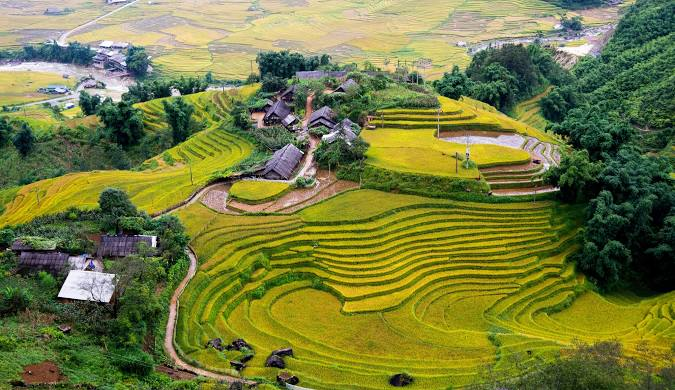
1.3 Ninh Binh – Karst Landscapes & Ancient Temples
Often called “Ha Long Bay on land,” Ninh Binh showcases limestone formations rising from emerald rice fields rather than ocean waters. Located just two hours south of Hanoi, this province offers a perfect escape from urban bustle without requiring extensive travel time. The landscape combines natural beauty with historical significance, as this area served as Vietnam’s capital during the 10th century.
Tam Coc provides Ninh Binh’s signature experience – gliding along the Ngo Dong River in small sampan boats rowed by local guides. These skilled rowers often use their feet rather than hands to navigate through three natural limestone tunnels. The journey winds through rice paddies flanked by towering karst formations, creating a serene, almost dreamlike atmosphere. During rice harvesting season, golden fields enhance the scene’s beauty.
The ancient capital of Hoa Lu contains well-preserved temples dedicated to emperors of the Dinh and Le dynasties. These structures date back to the 10th century, offering glimpses into Vietnam’s architectural history. Nearby, Bich Dong Pagoda climbs three levels up a mountainside, rewarding visitors with progressively more spectacular views. For wildlife enthusiasts, Van Long Nature Reserve provides sanctuary for endangered Delacour’s langur monkeys amid an unspoiled wetland landscape.
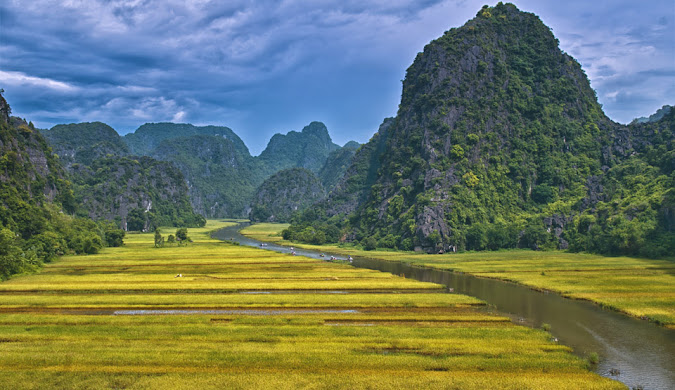
2. Central Vietnam’s Cultural Treasures
Central Vietnam represents the country’s historical and cultural heart, home to ancient imperial cities, perfectly preserved trading ports, and pristine beaches. This region balances natural beauty with architectural wonders spanning several centuries. From the lantern-lit streets of Hoi An to the imposing walls of Hue’s Citadel, Central Vietnam offers travelers an immersive journey through the country’s rich heritage.
2.1 Hoi An – UNESCO Old Town & Beaches
Hoi An captures visitors’ hearts with its exceptionally preserved ancient town, a living museum of Vietnamese, Chinese, and Japanese architectural influences. This former trading port flourished between the 15th and 19th centuries, developing a unique cultural blend still evident today. The UNESCO-protected Old Town features wooden shophouses, ornate temples, and iconic covered bridges illuminated by colorful silk lanterns each evening.
The town transforms completely during the monthly full moon festival, when electric lights are turned off in favor of traditional lanterns. Streets fill with traditional music, folk games, and food stalls serving local specialties. This celebration connects modern visitors with centuries-old traditions. The lantern-making workshops scattered throughout town offer opportunities to create your own colorful souvenir while learning about this distinctive local craft.
Beyond its historical treasures, Hoi An also offers beautiful beaches just a short bicycle ride from the ancient town. An Bang and Cua Dai beaches provide perfect settings for relaxation after cultural exploration, with soft white sand and clear waters. The town’s renowned culinary scene showcases specialties like cao lau (noodles with pork and greens) and white rose dumplings, dishes you won’t find elsewhere in Vietnam. Many restaurants offer cooking classes for those inspired to recreate these flavors at home.
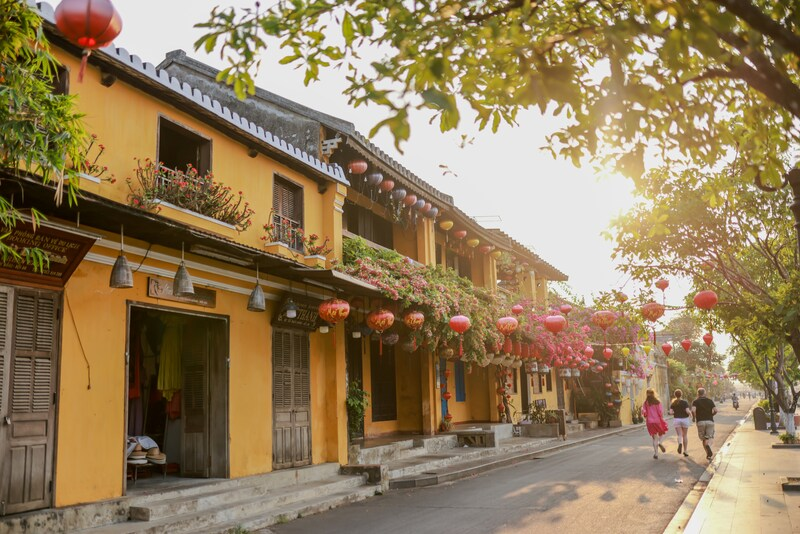
2.2 Da Nang – Modern City & Marble Mountains
Da Nang has transformed from a transit hub to one of Vietnam’s most dynamic destinations. This modern coastal city balances rapid development with natural attractions, creating a versatile base for exploring Central Vietnam. Its 30-kilometer coastline features several stunning beaches, with My Khe (China Beach) standing out for its pristine white sand and blue waters. The city’s dramatic skyline, dominated by uniquely designed skyscrapers like the dragon-shaped Dragon Bridge, comes alive with colorful light shows each weekend.
The Marble Mountains, a cluster of five marble and limestone hills, rise dramatically from the flat landscape just south of the city. Each mountain, named for a natural element (Water, Wood, Fire, Metal, and Earth), contains cave entrances, tunnels, and hidden Buddhist sanctuaries. Thuy Son (Water Mountain), the largest, houses several pagodas and offers panoramic views of Da Nang and the coastline from its summit. The area’s natural beauty served as spiritual refuge for centuries, first for Cham people and later for Vietnamese Buddhists.
Museum lovers appreciate Da Nang’s Museum of Cham Sculpture, housing the world’s largest collection of Cham artifacts. These stone sculptures, dating from the 5th to 15th centuries, showcase the sophisticated artistic achievements of the Champa civilization that once ruled Central Vietnam. For natural splendor, the nearby Son Tra Peninsula (Monkey Mountain) provides a forested escape with hiking trails, hidden beaches, and Vietnam’s tallest Lady Buddha statue overlooking the entire region.
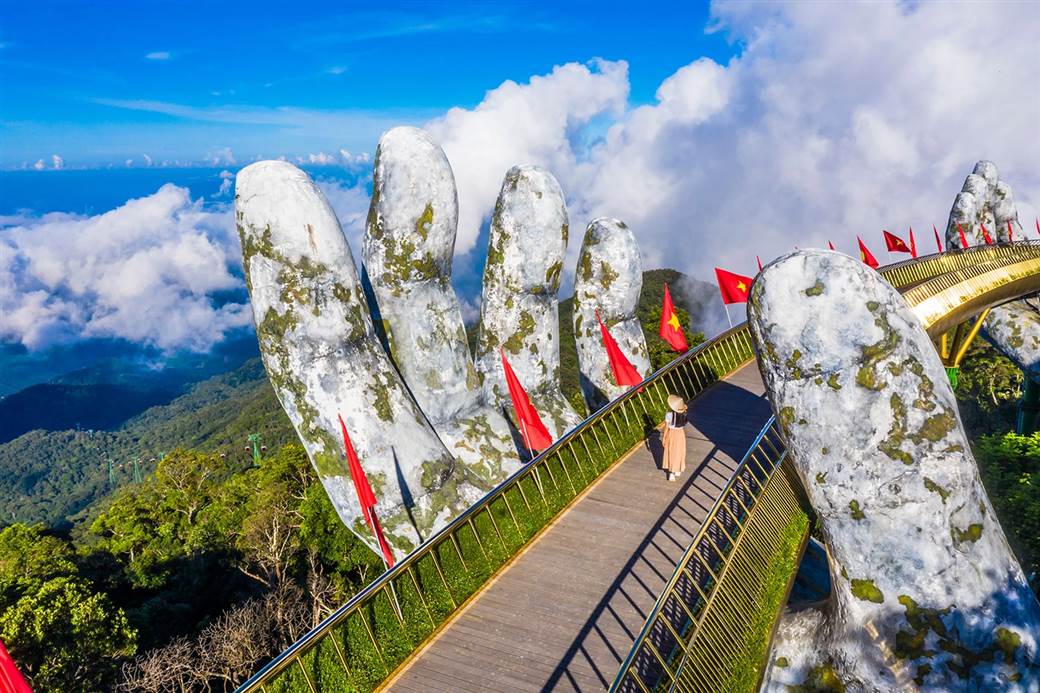
2.3 Hue – Imperial Citadel & Pagodas
Hue served as Vietnam’s imperial capital from 1802 to 1945, leaving a legacy of royal architecture unmatched elsewhere in the country. The massive stone walls of the Imperial Citadel enclose a vast complex of palaces, temples, and gardens modeled after Beijing’s Forbidden City. Despite suffering heavy damage during the Vietnam War, ongoing restoration work continues to recapture the site’s former splendor. The Purple Forbidden City, once reserved exclusively for the emperor, represents the Citadel’s most sacred and restricted area.
The Perfume River (Song Huong) flows gracefully through Hue, lined with historic sites and lush gardens. Boat cruises provide a relaxing way to view several important monuments, including iconic Thien Mu Pagoda with its seven-story tower. This pagoda, built in 1601, stands as Vietnam’s tallest religious structure and remains an active Buddhist monastery. The boat journey typically includes stops at several imperial tombs, each reflecting the personality and aesthetic preferences of different Nguyen emperors.
Hue’s royal heritage extends to its sophisticated cuisine, once prepared exclusively for emperors and their courts. These elaborate dishes emphasize artistic presentation alongside complex flavors. Many local restaurants specialize in royal cuisine, offering tasting menus that recreate imperial banquets in simplified form. Popular specialties include banh khoai (Hue-style crepes) and bun bo Hue (spicy beef noodle soup), providing delicious insight into the region’s culinary traditions.
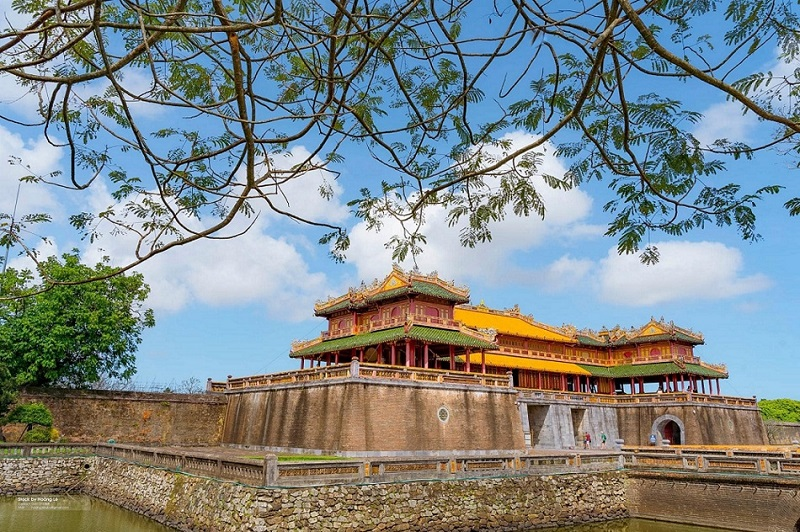
Things to buy in Vietnam the complete traveler’s shopping guide
3. Southern Vietnam’s Vibrant Retreats
Southern Vietnam pulses with energy, from the round-the-clock activity of Ho Chi Minh City to the languid rhythms of Mekong Delta life. This region’s tropical climate supports lush landscapes and agricultural abundance. The south offers travelers diverse experiences ranging from sophisticated urban adventures to island escapes with some of Southeast Asia’s most beautiful beaches. Warm weather year-round makes this region particularly appealing during the winter months.
3.1 Ho Chi Minh City – Urban Buzz & History
Ho Chi Minh City (formerly Saigon) embodies Vietnam’s dynamic energy and rapid development. As the country’s largest city and economic powerhouse, it presents a fascinating blend of historical landmarks and futuristic skyscrapers. The streets buzz with countless motorbikes navigating between French colonial buildings, modern shopping centers, and traditional markets. This urban energy creates an exhilarating atmosphere unlike anywhere else in Vietnam.
The War Remnants Museum provides powerful insight into the Vietnam War through photographic exhibits and preserved military equipment. Nearby, Reunification Palace remains largely unchanged since April 30, 1975, when North Vietnamese tanks crashed through its gates, marking the war’s end. The late 19th-century Notre Dame Cathedral and Central Post Office showcase the city’s French colonial architectural heritage. These historical sites offer context for understanding Vietnam’s complex past and remarkable development.
Culinary adventures await in Ho Chi Minh City’s vibrant street food scene. Vendors specialize in regional dishes like com tam (broken rice with grilled pork) and bun thit nuong (vermicelli noodles with grilled pork). Ben Thanh Market houses countless food stalls alongside souvenir vendors, creating a one-stop cultural immersion. For contrast, the city’s rooftop bars offer sophisticated cocktails with panoramic views of the evolving skyline. This blend of traditional and contemporary experiences makes Ho Chi Minh City a fascinating urban destination.
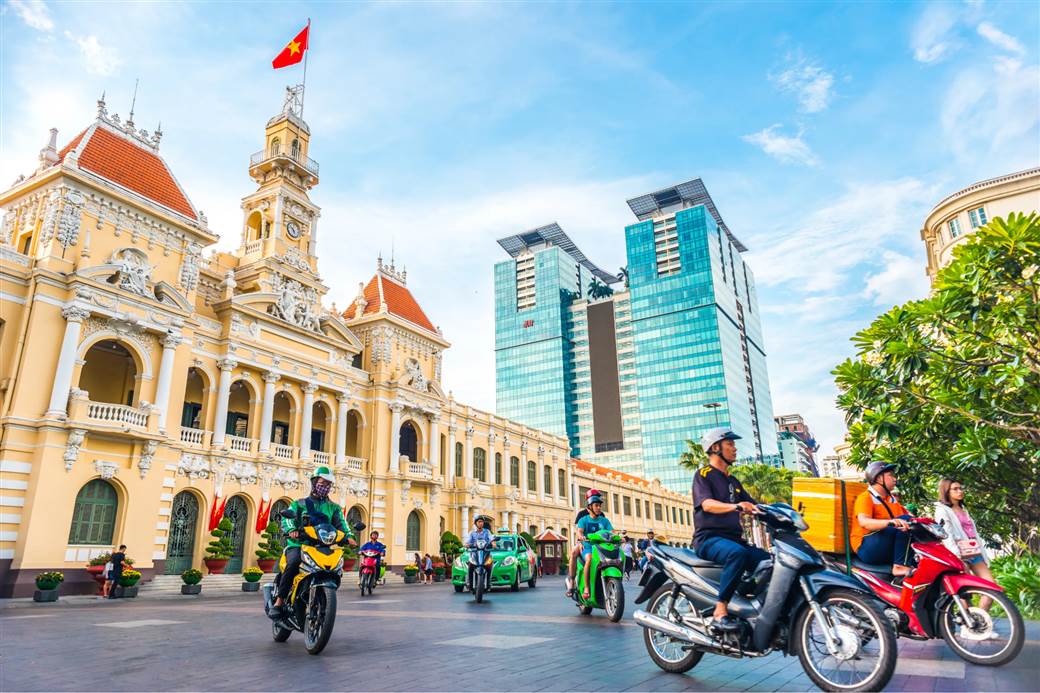
3.2 Mekong Delta – Floating Markets & Nature
The Mekong Delta forms Vietnam’s southwestern region, where the mighty Mekong River approaches the sea through a maze of waterways. Often called Vietnam’s “rice bowl,” this fertile area produces abundant crops visible in the patchwork of vibrant green fields. Life here revolves around water, with floating markets, stilted villages, and boat transportation forming the backbone of daily existence. The delta’s tranquil pace offers perfect counterbalance to urban experiences elsewhere in Vietnam.
Cai Rang floating market near Can Tho provides the delta’s most impressive commercial spectacle. Before dawn, hundreds of boats converge, creating a floating marketplace where vendors announce their goods by hanging samples from tall bamboo poles. Smaller boats weave between larger vessels, selling noodle soup breakfasts and strong coffee to traders and visitors alike. This centuries-old trading tradition continues despite modern retail development, offering authentic glimpses into traditional commerce.
Beyond markets, the delta’s natural environments support diverse ecosystems worth exploring. Tram Chim National Park protects wetland habitats for over 230 bird species, including the rare Eastern Sarus crane. Several provinces offer eco-tours through mangrove forests and fruit orchards. Homestays in delta communities allow visitors to participate in cooking classes, fruit harvesting, or fishing using traditional methods. These experiences provide deeper understanding of the intimate relationship between local people and their fertile environment.
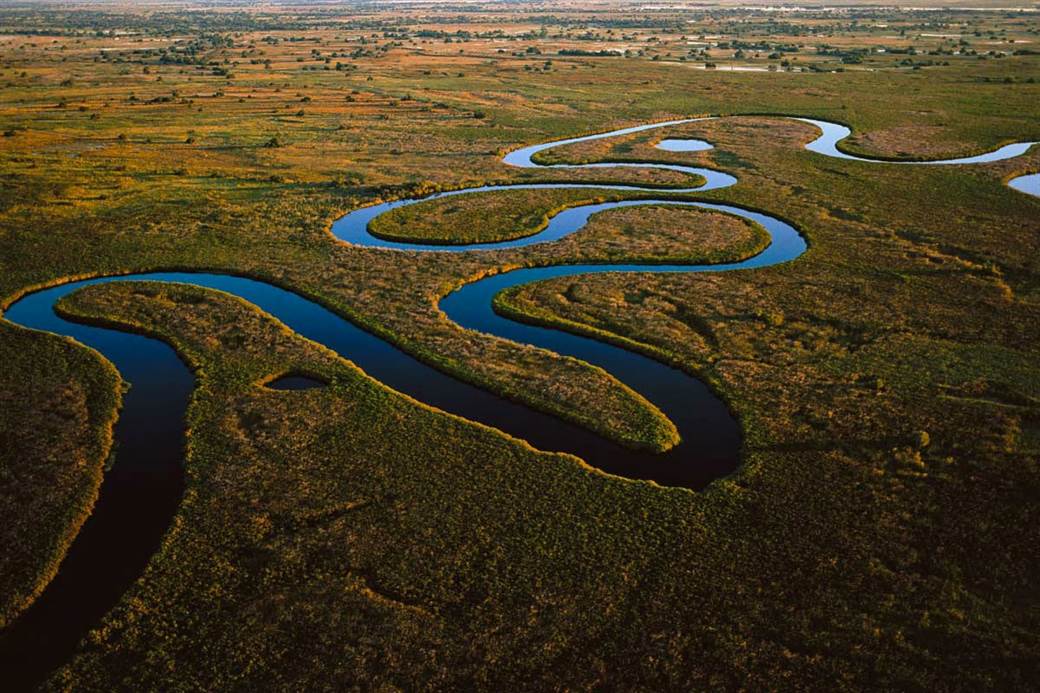
3.3 Phu Quoc – Island Paradise & Snorkeling
Phu Quoc, Vietnam’s largest island, lies in the Gulf of Thailand near the Cambodian border. Once a sleepy backwater known primarily for fish sauce production, it has developed into a premier beach destination while maintaining significant undeveloped areas. More than half the island falls within Phu Quoc National Park, preserving dense tropical forest and native wildlife. This balance of development and conservation creates varied experiences for different traveler preferences.
The island’s western coast features long stretches of stunning white-sand beaches with technicolor sunsets. Bai Sao (Star Beach) on the southeastern shore consistently ranks among Vietnam’s most beautiful beaches, with powder-fine sand and shallow turquoise waters perfect for families. The north and east remain comparatively undeveloped, offering secluded coves accessible by motorbike or boat. These quieter areas provide glimpses of the island’s traditional fishing communities continuing generations-old practices.
The surrounding waters offer excellent snorkeling and diving opportunities, with visibility often exceeding 15 meters. Coral reefs near An Thoi islands in the south harbor diverse marine life, from colorful reef fish to sea turtles. On land, visitors can tour pepper plantations, fish sauce factories, or pearl farms for insight into local industries. Night markets in Duong Dong town showcase island seafood specialties alongside souvenirs and handicrafts. This combination of natural beauty and cultural experiences makes Phu Quoc an increasingly popular destination.
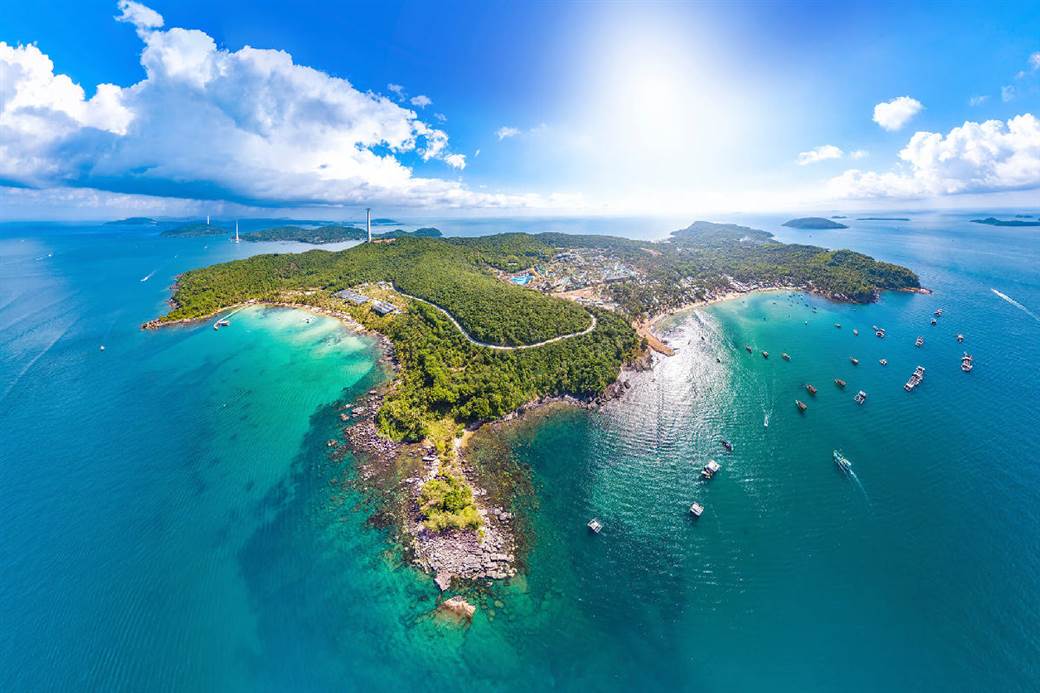
4. Vietnam’s Hidden Gems & Offbeat Destinations
Beyond Vietnam’s iconic destinations lie remarkable places that remain relatively undiscovered by mass tourism. These hidden gems reward travelers willing to venture further with unspoiled landscapes, authentic cultural exchanges, and the thrill of exploration. At Phieu Travel, we particularly value these lesser-known destinations for the deeper connections they foster with Vietnam’s diverse geography and cultural traditions.
4.1 Ha Giang – Dramatic Loops & Ethnic Culture
Ha Giang province occupies Vietnam’s northernmost territory, sharing a border with China across dramatic limestone formations. The region’s renowned Ha Giang Loop – a winding 350-kilometer motorcycle route – traverses some of Southeast Asia’s most spectacular mountain scenery. Massive karst plateaus, deep valleys, and precarious mountain passes create an other-worldly landscape that changes dramatically with the seasons. The province remains relatively undeveloped, maintaining authentic ethnic minority cultures and pristine natural environments.
Ma Pi Leng Pass represents the loop’s most breathtaking section, where the narrow road clings to limestone cliffs hundreds of meters above the Nho Que River’s turquoise waters. Nearby Dong Van Karst Plateau, recognized as a UNESCO Global Geopark, features unusual rock formations created through millions of years of geological processes. The Sunday market at Dong Van town brings together Hmong, Dao, Tay, and other ethnic groups in a vibrant gathering that has changed little in centuries. These authentic cultural exchanges provide insight into traditional highland life.
Seasonal changes transform Ha Giang’s appearance throughout the year. Spring brings plum and peach blossoms across the mountains. Summer turns terraced fields vibrant green as rice grows. Autumn harvests paint hillsides golden, while winter brings occasional snowfall to higher elevations. Most remarkable is late October through November, when triangular buckwheat flowers bloom across fields in shades of white, pink and purple. This flowering creates ethereal landscapes that attract photographers from around the world.
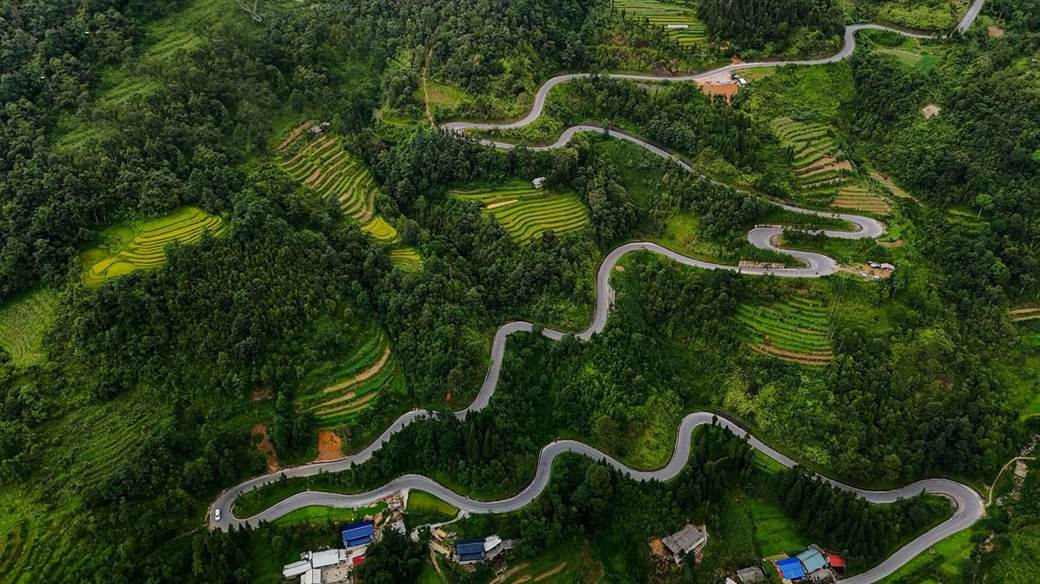
Ma Pi Leng Pass – The Majestic Beauty of Ha Giang’s Stone Plateau
4.2 Ban Gioc Waterfall – Border Beauty
Ban Gioc Waterfall cascades majestically along the Vietnam-China border, creating one of Southeast Asia’s most spectacular natural boundaries. At 30 meters high and 300 meters wide, this multi-tiered waterfall spans both countries, with the border running directly through its cascade. Surrounded by limestone mountains and lush vegetation, the falls present different aspects depending on the season. During summer rainy months, powerful water volumes create thunderous displays, while dry season reveals the distinct tiers and rock formations more clearly.
Unlike many border areas, Ban Gioc offers relatively easy access and facilities for international visitors. Small bamboo rafts piloted by local guides approach the base of the falls, providing close-up views and refreshing spray. The surrounding landscape remains largely undeveloped, with rice terraces and small villages dotting the countryside. Traditional farming methods continue in fields adjacent to the tourist area, creating a harmonious balance between nature, agriculture, and limited tourism infrastructure.
Within day-trip distance from Ban Gioc, Nguom Ngao Cave extends for several kilometers underground with impressive stalactite and stalagmite formations. Nearby Pac Bo Cave provided revolutionary leader Ho Chi Minh with shelter upon his 1941 return to Vietnam. These complementary attractions make the journey to this remote corner of Cao Bang province particularly rewarding. The area receives significantly fewer visitors than Vietnam’s more accessible destinations, creating opportunities for peaceful enjoyment of extraordinary natural beauty.
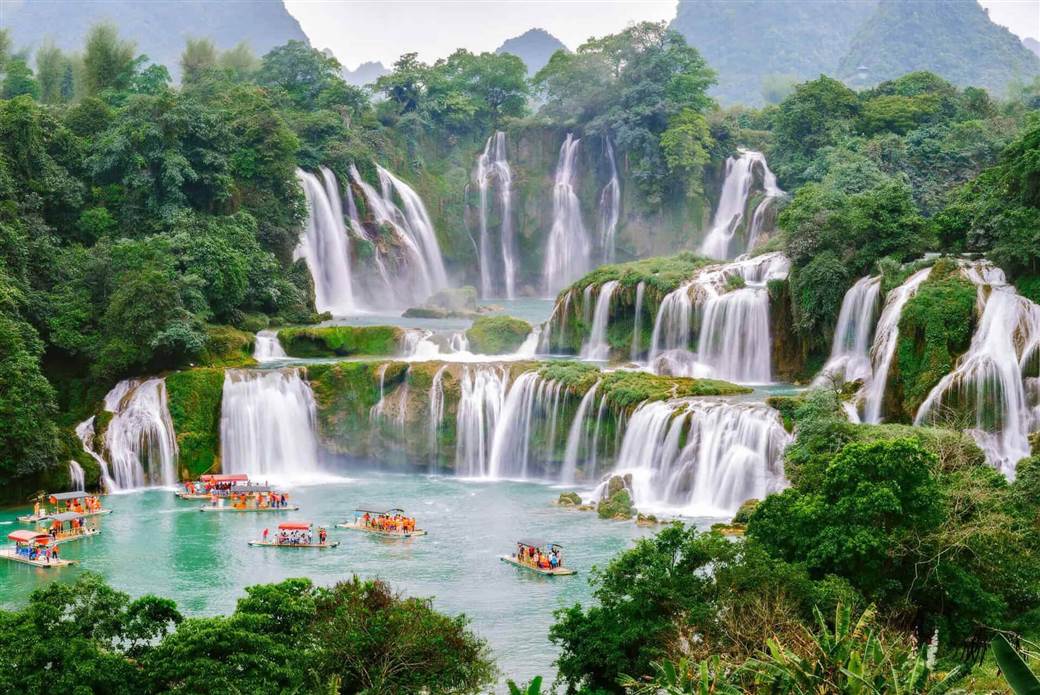
4.3 Con Dao Islands – Unspoiled Shores
The Con Dao archipelago consists of 16 islands scattered across the South China Sea, approximately 230 kilometers from mainland Vietnam. This remote location preserved both natural environments and haunting history. For nearly a century until 1975, Con Son (the largest island) housed infamous political prisons established during French colonial rule and later expanded by South Vietnamese and American forces. Today, these restored prison buildings serve as powerful historical museums contrasting starkly with the islands’ paradisiacal beaches and undeveloped coastline.
Con Dao National Park protects about 80% of the archipelago, including Vietnam’s most important sea turtle nesting grounds. Between May and October, endangered green turtles come ashore at night to lay eggs on protected beaches. The park arranges small, carefully managed nighttime viewing excursions with naturalist guides. Marine conservation extends to surrounding waters, where rare dugongs (sea cows) feed on seagrass meadows. Healthy coral reefs support abundant marine life, making Con Dao one of Vietnam’s premier snorkeling and diving locations.
The islands’ isolation has prevented overdevelopment, maintaining pristine beaches with crystal clear waters and minimal crowds. Dam Trau offers powder-white sand bordered by forest, while Dat Doc combines dramatic rocky outcrops with sheltered swimming conditions. Small-scale, environmentally conscious resorts provide comfortable bases without overwhelming the natural setting. For many visitors, Con Dao’s greatest luxury is its tranquility – a rare commodity in rapidly developing Vietnam. This delicate balance of historical significance and natural conservation creates a uniquely moving destination.
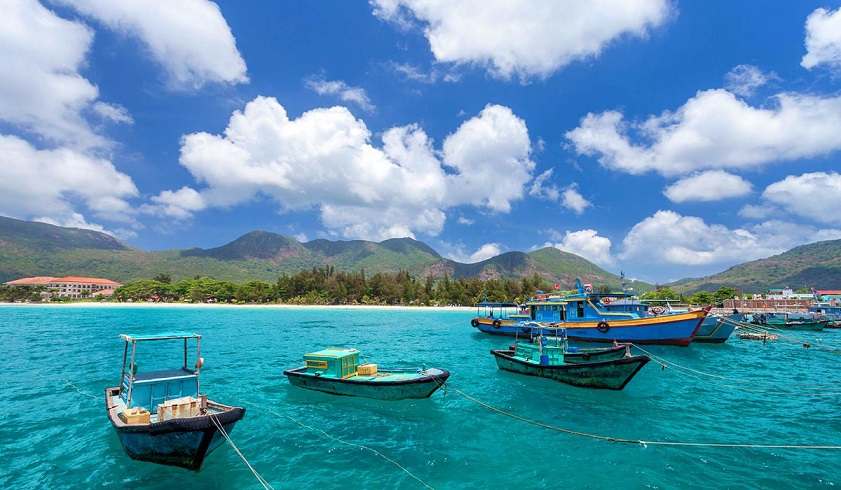
5. Insider Tips for Planning Your Visit
Planning a successful Vietnam journey requires understanding the country’s diverse regions, seasonal variations, and practical considerations. With extensive on-the-ground experience, Phieu Travel has compiled essential advice to help you maximize your experience of Vietnam’s most beautiful places. These practical insights will help you determine when to visit, how to budget effectively, and how to navigate cultural expectations.
5.1 Best Times to Visit (Seasonality)
Vietnam’s elongated geography creates distinct climate zones, making it possible to find good weather somewhere in the country year-round. Northern Vietnam experiences four seasons, with spring (March-April) and autumn (September-October) offering the most pleasant conditions for exploring Ha Long Bay, Sapa, and Hanoi. Summer brings heat and heavy rainfall, while winter months can be surprisingly chilly in mountainous areas like Ha Giang. Spring showcases beautiful blossoms, while autumn offers clear skies and comfortable temperatures.
Central Vietnam’s weather patterns differ significantly, with the rainy season occurring from September through December. Heavy rainfall occasionally causes flooding in Hoi An and Hue during October and November. The best months to visit central destinations are February through August, with April to June offering ideal beach conditions before summer heat intensifies. Travelers should note that Hoi An’s full moon lantern festivals, occurring on the 14th day of each lunar month, create especially magical evenings worth planning around.
Southern Vietnam maintains tropical warmth year-round, with distinct wet and dry seasons. The dry season from December through April provides reliable sunshine for exploring Ho Chi Minh City and beach destinations like Phu Quoc. The wet season brings brief but intense afternoon downpours rather than continuous rainfall, with May through November seeing the heaviest precipitation. These showers rarely disrupt travel plans significantly and often provide welcome cooling. The Mekong Delta appears lushest during and immediately after rainy months, with floating markets particularly active during fruit harvesting seasons.
Best time to visit Vietnam ultimate guide by region, month & travel type
5.2 Budget & Transport Advice
Vietnam offers extraordinary value compared to many international destinations, with options for every budget level. Basic accommodations in guest houses or hostels typically range from $10-30 per night, while mid-range hotels average $30-70. Luxury properties and resort stays generally start around $100, with exceptional value compared to equivalent properties elsewhere in Southeast Asia. Food costs remain remarkably reasonable, with street food meals available for $1-3 and mid-range restaurant dinners rarely exceeding $10 per person outside international hotels.
Transportation within Vietnam provides numerous convenient options. Domestic flights connect major destinations, saving valuable time when covering longer distances between Hanoi and Ho Chi Minh City or reaching remote areas like Con Dao. Vietnam Airlines, VietJet, and Bamboo Airways offer extensive networks with frequent promotions. For shorter distances, trains provide comfortable alternatives along the north-south corridor, particularly the scenic journey between Hanoi and Hue. Sleeper buses operate nationwide with surprisingly comfortable berths for overnight travel, though mountain routes can challenge those prone to motion sickness.
For local exploration, ride-hailing apps like Grab provide safe, affordable transportation in urban areas without negotiation concerns. Motorbike taxis (xe om) remain ubiquitous in smaller towns, while bicycle rentals offer perfect transportation in flatter destinations like Hoi An and Ninh Binh. Many travelers choose motorbike rentals for exploring areas like the Ha Giang Loop or coastal roads, though this requires confidence in riding skills and appropriate international driving permits. For maximum flexibility without driving responsibilities, Phieu Travel arranges private cars with drivers at surprisingly reasonable rates compared to self-driving in many countries.
5.3 Safety, Culture, and Etiquette
Vietnam ranks among Southeast Asia’s safest countries for travelers, with violent crime extremely rare. Most safety concerns involve petty theft in crowded tourist areas or traffic risks. Protect valuables, use hotel safes, and remain aware in busy markets or nightlife districts. For traffic safety, use regulated taxis or ride-sharing apps rather than unlicensed operators. When crossing streets amid seemingly chaotic traffic, maintain steady, predictable movement rather than sudden stops or sprints – vehicles will anticipate and flow around you.
Vietnamese culture places high value on respect, particularly toward elders. Simple courtesies make significant positive impressions: use both hands when giving or receiving items, remove shoes when entering homes or some temples, and dress modestly when visiting religious sites. Physical displays of affection remain uncommon in public. When photographing people, especially in ethnic minority areas, always request permission first – preferably through guides who speak local languages. Consider purchasing small handicrafts as appreciation when photographing artisans or villages that welcome tourists.
Dining etiquettes reflect communal traditions, with multiple dishes shared among all diners. Wait for the eldest person to begin eating, use your right hand for handling food, and leave chopsticks resting beside your bowl rather than sticking upright (which resembles funeral incense). Vietnamese appreciate visitors attempting basic phrases – simple greetings like “xin chào” (hello) and “cảm ơn” (thank you) demonstrate respect for local culture. When visiting homes, small gifts like fruit, flowers, or quality tea show appreciation for hospitality. These small courtesies significantly enhance cultural connections during your journey.
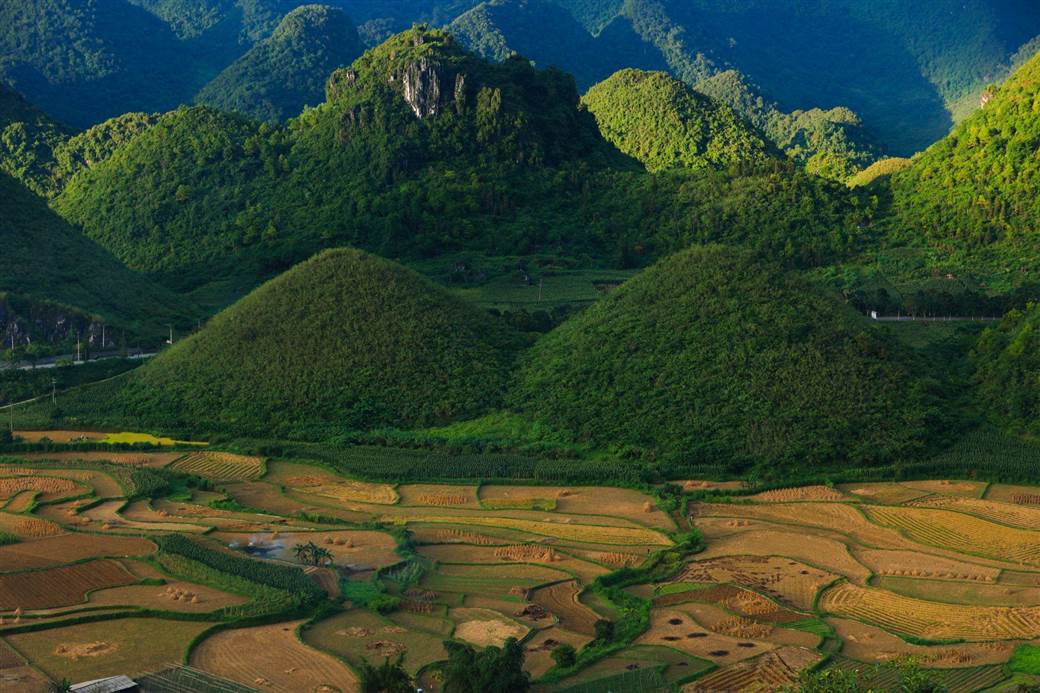
6. Frequently Asked Questions
Planning a Vietnam trip can raise many questions, from visas and safety to the best time to visit. This FAQ section provides concise, practical answers to help you navigate your journey and make the most of exploring the most beautiful places in Vietnam.
6.1 Do I need a visa to visit Vietnam?
Most nationalities require a visa to enter Vietnam, with several options available. The e-visa system (https://evisa.xuatnhapcanh.gov.vn) allows 30-day single-entry visits for citizens of 80 countries. Applications cost $25, require a passport photo and take approximately three working days. Alternatively, visa approval letters obtained through travel agencies allow visa-on-arrival at major airports, requiring additional passport photos and stamping fees paid in cash. Select nationalities (including some European countries) enjoy visa exemptions for stays under 15 days. Requirements change periodically, so always check current regulations before booking flights.
6.2 What is the best time of year to visit the top destinations?
The ideal time for a comprehensive Vietnam tour spans October through April, when weather conditions prove most favorable across multiple regions. Northern Vietnam shines during October-November and March-April, with pleasant temperatures and minimal rainfall. Central Vietnam offers best conditions from February through April before summer heat intensifies. Southern destinations remain consistently warm, with the December-April dry season providing reliable sunshine for beach activities and urban exploration. For specialized interests like Ha Giang’s buckwheat flower season (October-November) or Con Dao’s turtle nesting (May-October), specific timing becomes more crucial.
6.3 Is Vietnam safe for tourists and solo travelers?
Vietnam maintains an excellent safety record for international visitors, including solo travelers. Violent crime targeting tourists remains extremely rare, with most safety concerns limited to petty theft in crowded areas or traffic-related risks. Solo female travelers generally report feeling secure, though standard precautions like avoiding isolated areas after dark remain advisable. The greatest safety risks involve traffic accidents, particularly for those renting motorbikes without sufficient experience. Most Vietnamese people show genuine hospitality toward foreign visitors, often going out of their way to assist travelers experiencing difficulties.
6.4 What are the must-see cities and natural wonders in Vietnam?
Vietnam’s essential destinations balance urban exploration with natural splendor. Hanoi’s atmospheric Old Quarter and Ho Chi Minh City’s dynamic energy provide contrasting urban experiences. Ha Long Bay’s limestone seascape represents Vietnam’s most iconic natural wonder, while Sapa’s terraced mountains showcase human adaptation to challenging terrain. Hoi An’s preserved ancient town offers Vietnam’s most atmospheric historical experience alongside nearby beaches. For natural immersion, Phong Nha-Ke Bang National Park houses the world’s largest caves, while Phu Quoc Island provides tropical retreat. First-time visitors should consider northern and central regions if limited to a single trip, as these areas contain Vietnam’s highest concentration of distinctive landscapes and cultural sites.
6.5 How to get around Vietnam (transport options)?
Vietnam offers diverse transportation options catering to different preferences and budgets. Domestic flights connect major destinations efficiently, with competitive fares when booked in advance. The north-south railway provides scenic journeys between key cities, with four comfort classes including private sleeper compartments. Long-distance buses, including comfortable sleeper coaches, connect nearly every destination at budget-friendly prices. Within cities, ride-hailing apps offer convenient, affordable alternatives to traditional taxis. For independent travelers, motorbike rentals provide ultimate flexibility, though traffic challenges make this suitable only for experienced riders. Phieu Travel specializes in arranging seamless transportation combinations optimized for your specific itinerary and comfort preferences.
6.6 What budget should I prepare for travel in Vietnam?
Vietnam accommodates nearly any budget level while providing exceptional value compared to many international destinations. Budget travelers can comfortably manage on $30-40 daily, covering hostel accommodations, street food meals, and basic transportation. Mid-range experiences including comfortable hotels, restaurant dining, and guided excursions typically require $75-125 per day. Luxury travel featuring five-star accommodations, private transportation, and premium experiences generally starts around $200 daily. Food costs remain reasonable across categories, with street food meals from $1-3 and upscale dining rarely exceeding $25 per person. Most tourist activities and entrance fees cost between $2-15, with premium experiences like overnight Ha Long Bay cruises representing larger investments.
Vietnam’s breathtaking landscapes, vibrant cities, and rich cultural heritage make it an extraordinary destination for travelers seeking diverse experiences. From the limestone karsts of Ha Long Bay to the golden beaches of Phu Quoc, from ancient Hoi An lanterns to modern Ho Chi Minh City skyscrapers, the country offers remarkable variety within relatively compact geography. The most beautiful places to visit in Vietnam reveal themselves not just through spectacular scenery but through meaningful interactions with local communities, cuisine, and traditions. Let Phieu Travel guide your journey through this captivating country, customizing experiences that match your interests, pace, and travel style. Discover more at Phieutravel.com.
Read more:
- Driving License Requirements for Vietnam Motorbike Loop (2025 Guide)
- Top 4 rice fields Vietnam destinations & perfect times to go
- Best places to visit in Northern Vietnam a complete 2025 guide

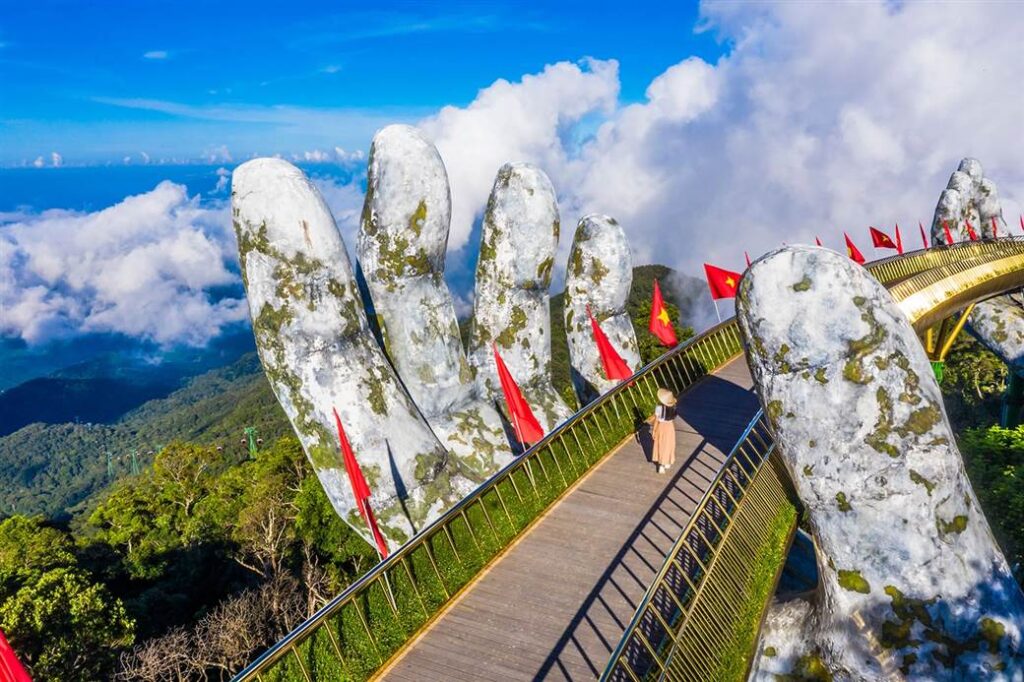
You Might Also Like
Ha Giang Weather in September: Complete Guide for Travelers
Exploring the magnificent Ha Giang Loop in September offers travelers a perfect balance of favorable[...]
Quan Ba Twin Mountains: Ha Giang’s Iconic Fairy Hills and Complete Travel Guide
The mystical Quan Ba Twin Mountains rise from the emerald valleys of Ha Giang like[...]
Vuong family mansion: the architectural marvel and cultural legacy of Ha Giang
Deep in Vietnam’s northern highlands, where mist-shrouded mountains meet terraced rice fields, stands a testament[...]
Ha Giang Loop Safety Tips: How to Ride Securely in Vietnam’s Northern Mountains
The Ha Giang Loop, with its winding mountain roads and breathtaking landscapes, offers one of[...]
The Ultimate Guide to the M-Shaped Curve on Ha Giang Loop
Vietnam’s remote northern province of Ha Giang hides a natural wonder that has captivated adventurous[...]
Most Beautiful Places to Visit in Vietnam: Essential Destinations and Insider Tips
Vietnam captivates travelers with its stunning landscapes, rich cultural heritage, and warm hospitality. From mist-shrouded[...]
Beyond the Beaten Path: Discovering Ha Giang Province in Northeast Vietnam
Ha Giang Province in Northeast Vietnam stands as one of the country’s last frontiers for[...]
Rainy season in Ha Giang: what to expect, when to go, and travel tips
Vietnam’s northern frontier reveals a different face during the rainy season, transforming Ha Giang’s limestone[...]